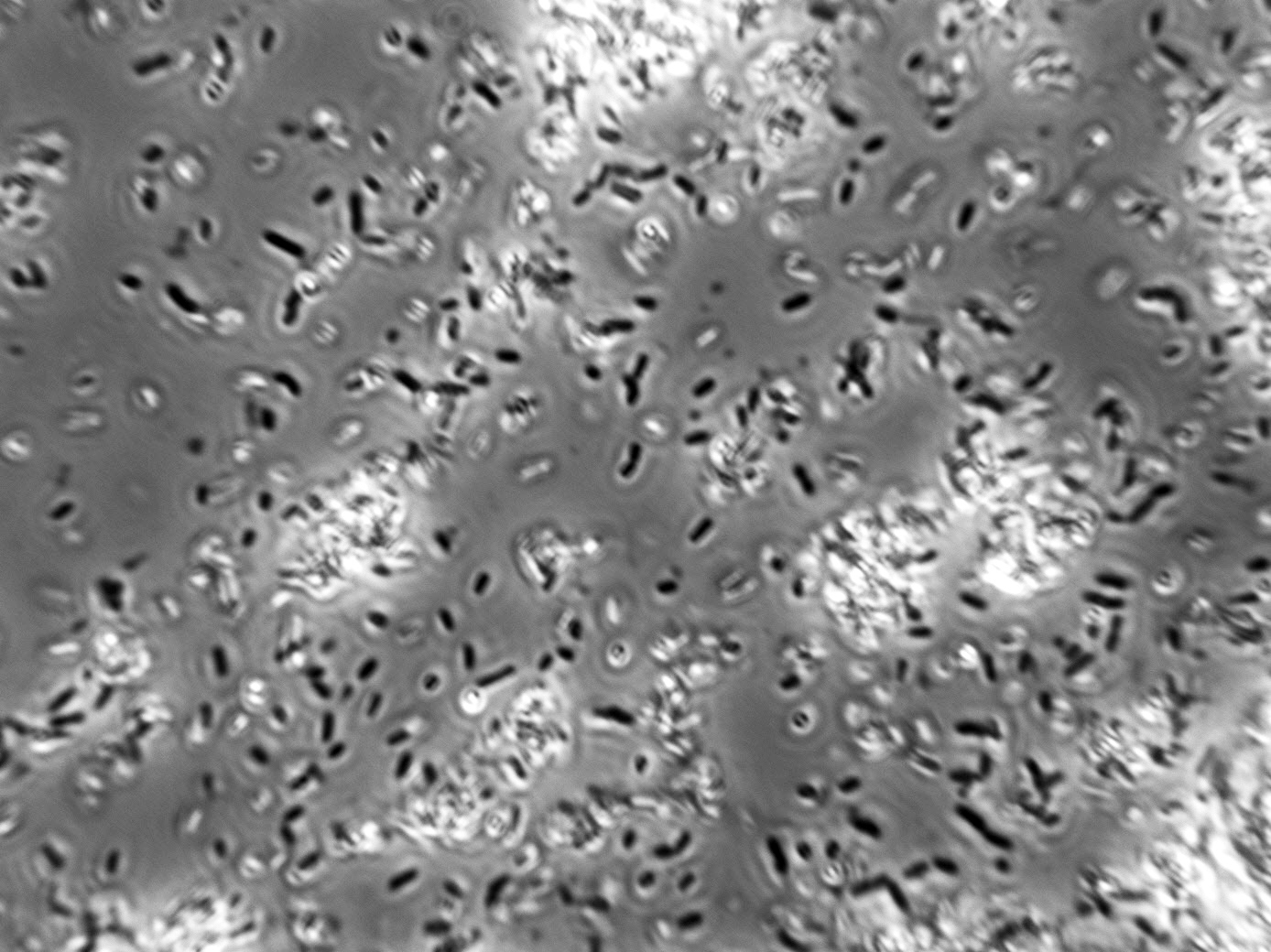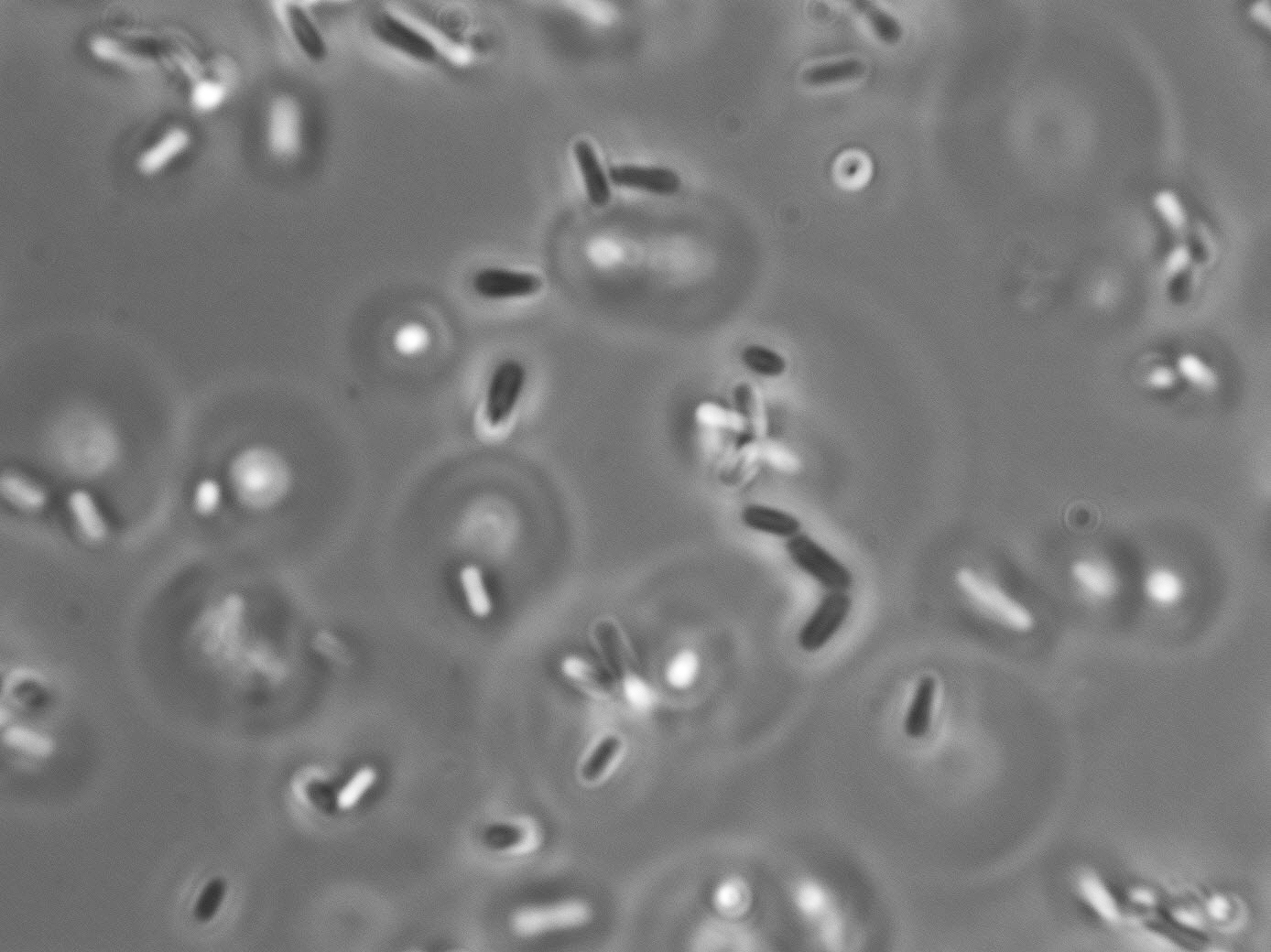Genus/species (aliases): Lactobacillus plantarum
Gram Stain: Positive
Morphology:
Cell: small (0.5 – 1.2 x 1.0 – 10μm), elongated rod-like bacilli assembled in pairs or in chains of variable length
Colony: punctiform, convex, entire margin
Liquid Growth: dispersed
 |
 |
Physiological Traits:
- Facultative hetero-fermenters and facultative anaerobes
- Substrates: malic acid, tartaric acid, glucose, and some pentose sugars
- Products: mostly lactic acid, but also acetic acid, succinic acid, ethanol, carbon dioxide, biogenic amines, and precursors of ethyl carbamate
Ecological Traits:
- Can be found in a variety of different plants (“plantarum” means species of the plants), and is used for fermentations in meat and cabage and in cheese and yogurt production
- Present in the GI tract of humans and animals and considered a probiotic because of its ability to inhibit growth of harmful bacteria
Distinguishing Features:
- (G+C)%: 36-47%
- Catalase negative
- DNA composition specific to organism and is not influenced by culture conditions, therefore genomic identification is highly reliable
- API 50 CHL identification system can be used, as it is known to grow on 25 of the 49 substrates
Role in wine:
- This organism is commonly present in grapes, plant material and musts, but is also found in wine. It can also be present in a variety of winery surfaces.
- Spoilage by this organism is common in musts and wine, and is caused by its hetero-fermentative property of converting malic acid into compounds other than lactic acid. Of these, acetic acid is of concern and biogenic amines and ethyl carbamate may be produced.
Sensitivities:
SO2: slight
Sorbate:
DMDC: yes
pH: slight
Acids:
Ethanol: Slight
Anaerobiosis:
Heat
